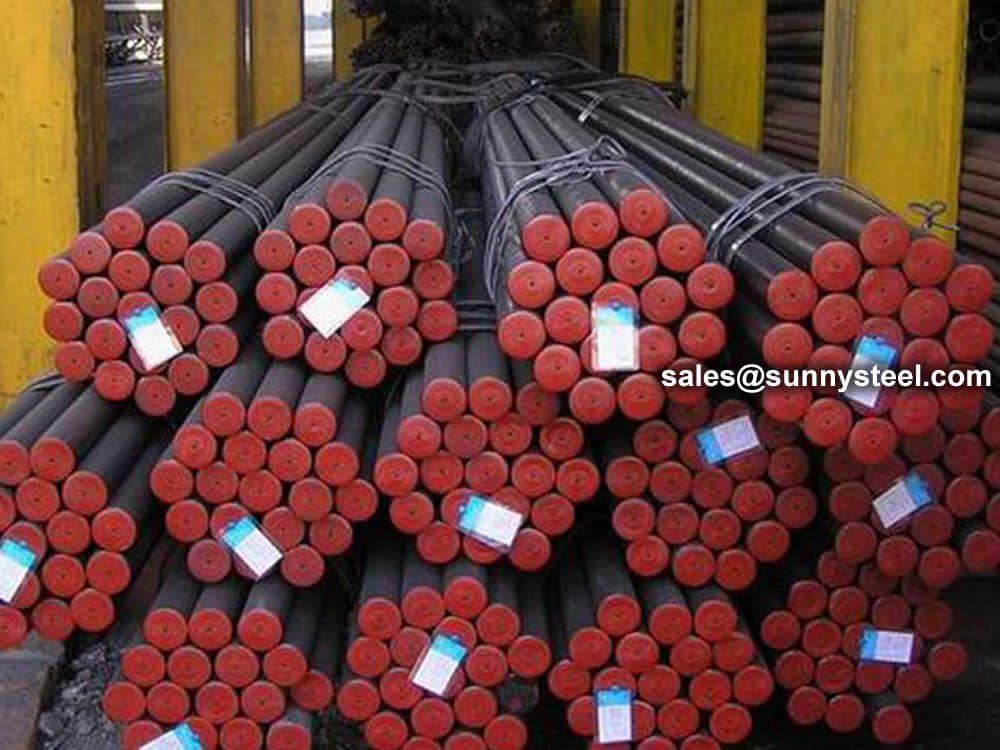
JIS G3458 standard is made for heat resistant alloy steel pipes that are used for high temperature conveying fluid pipes for heaters and boiler tubes.
JIS G3458 alloy steel pipes are commonly used in industries where high-temperature and high-pressure conditions are present, such as power plants, refineries, and petrochemical plants.
JIS G3458 Alloy Steel Pipes are designed to meet demanding industrial requirements for high-temperature and high-pressure applications. Known for their durability and strength, these pipes are widely used in industries such as power generation, petrochemical, and oil & gas, where extreme conditions are prevalent.
The pipes specified in JIS G3458 are made of various grades of alloy steel. Some common grades include STPA 12, STPA 20, STPA 22, STPA 23, STPA 24, STPA 25, and STPA 26.
| Grade | C | Si | Mn | P | S | Cr | Mo |
|---|---|---|---|---|---|---|---|
| STPA 12 | 0.10~0.20 | 0.10~0.50 | 0.30~0.80 | 0.035 max. | 0.035 max. | - | 0.45~0.65 |
| STPA 20 | 0.10~0.20 | 0.10~0.50 | 0.30~0.60 | 0.035 max. | 0.035 max. | 0.50~0.80 | 0.45~0.65 |
| STPA 22 | 0.15max. | 0.50 max. | 0.30~0.60 | 0.035 max. | 0.035 max. | 0.80~1.25 | 0.45~0.65 |
| STPA 23 | 0.15max. | 0.50~1.00 | 0.30~0.60 | 0.030 max. | 0.030 max. | 1.00~1.50 | 0.45~0.65 |
| STPA 24 | 0.15max. | 0.50 max. | 0.30~0.60 | 0.030 max. | 0.030 max. | 1.90~2.60 | 0.87~1.13 |
| STPA 25 | 0.15max. | 0.50 max. | 0.30~0.60 | 0.030 max. | 0.030 max. | 4.00~6.00 | 0.45~0.65 |
| STPA 26 | 0.15max. | 0.25~1.00 | 0.30~0.60 | 0.030 max. | 0.030 max. | 8.00~10.00 | 0.90~1.10 |
The mechanical properties of the alloy steel pipes depend on the specific grade. These properties include tensile strength, yield strength, elongation, and hardness.
| Grade | Tensile strength | Yield point or proof stress | Elongation % | |||
|---|---|---|---|---|---|---|
| kgf/mm2 {N/mm2} | kgf/mm2 {N/mm2} | No. 11 or No.12 test piece | No. 5 test piece | No.4 test piece | ||
| Longitudinal | Transverse | Longitudinal | Transverse | |||
| STPA 12 | 39{382}min. | 21{206} min. | 30 min. | 25 min. | 24 min. | 19 min. |
| STPA 20 | 42{412}min. | 21{206} min. | 30 min. | 25 min. | 24 min. | 19 min. |
| STPA 22 | 42{412}min. | 21{206} min. | 30 min. | 25 min. | 24 min. | 19 min. |
| STPA 23 | 42{412}min. | 21{206} min. | 30 min. | 25 min. | 24 min. | 19 min. |
| STPA 24 | 42{412}min. | 21{206} min. | 30 min. | 25 min. | 24 min. | 19 min. |
| STPA 25 | 42{412}min. | 21{206} min. | 30 min. | 25 min. | 24 min. | 19 min. |
| STPA 26 | 42{412}min. | 21{206} min. | 30 min. | 25 min. | 24 min. | 19 min. |
JIS G3458 Grade STPA 22 Tubes are low-cost Low Carbon Steel Tubes with max 015 % carbon content with combination of 030-060 % manganese easy to form and shape .
These pipes are manufactured as per JIS Specification and commercially referred as cs pipes or ms pipes.
Low Carbon Steel Pipes are not as hard as hig carbon steel pipes,Though carburizing can increase its surface hardness.
The tubes shall be manufactured by seamless process, electric resistance welding process, or butt welding process, and those of other grades shall be manufactured by seamless process or electric resistance welding process. The tube shall be as manufactured or as cold-finished condition, or they shall be subjected to appropriate heat treatment.
The tubes shall be practically straight. and the two ends shall be at right angles to the axis of the tube. The tubes shall be free from defects detrimental to practical use.
Packing: Bare/bundles/crates/crate protection at the both sides of tubes or as per customers�requirements.
Painting: as requested.
Japanese Industrial Standards (JIS) developed by the organization apply to a wide variety of industrial services and technologies such as automobiles, metallurgy, ships and medical equipment
The method for making cold-drawn seamless pipes involves taking a round “billet” or bar of steel and boring it in the center, turning it, cutting it, heating it to make it more pliable, then “drawing” it (extruding or pulling it) to make it a longer and thinner tube.
Japanese Industrial Standards specifies the standards used for industrial activities in Japan. The standardization process is coordinated by Japanese Industrial Standards Committee and published through Japanese Standards Association.
The Industrial Standardization Law was revised in 2004 and the JIS mark product certification system was changed. Standards are named like “JIS X 0208:1997″, where X denotes area division, followed by four digits (or five digits for some of the standards corresponding ISO standards) and the revision release year.
EN 10204:2004 is for metallic products-and this norm tell us things about Types of inspection documents. There are no material standards.
Mostly material is defined with its chemical composition and mechanical properties in a public standars like ISO, EN, JIS, ASTM etc.
Japanese Industrial Standards (JIS) specifies the standards used for industrial activities in Japan. The standardization process is coordinated by Japanese Industrial Standards Committee and published through Japanese Standards Association.
Table 1: Tolerance on Outside Diameter in JIS G3441, G3444, G3445
| Standard | Tolerance on outside diameter (mm) | |
|---|---|---|
| JIS G3441 JIS G3444 JIS G3445 |
=50 | ±0.5 |
| >50 | ±1% | |
| JIS G3441 JIS G3444 JIS G3445 |
<50 | ±0.25 |
| >50 | ±0.5% | |
| JIS G3441 JIS G3445 |
<25 | ±0.12 |
| >25-40 | ±0.15 | |
| >40-50 | ±0.18 | |
| >5:.60 | ±0.20 | |
| >60-70 | ±0.23 | |
| >70-80 | ±0.25 | |
| >80-90 | ±0.30 | |
| >90-100 | ±0.40 | |
| >100 | ±0.5% | |
| JIS G3441 | <13 | ±0.25 |
| >13-25 | ±0.40 | |
| >25-40 | ±0.60 | |
| >40-65 | ±0.80 | |
| >65-90 | ±1.00 | |
| >90-140 | ±1.20 | |
| >140 | By agreement | |
| Standard | Tolerance on wall thickness (mm) | |
|---|---|---|
| JIS G3441 JIS G3444 JIS G3445 |
<=4 | -0.5,+0.6 |
| >4 | -12.5%, +15% | |
| JIS G3441 JIS G3444 JIS G3445 |
<=3 | ±0 .3 |
| >3 | ±10% | |
| JIS G3441 JIS G3445 |
<=2 | ±0.15 |
| >2 | ±8% | |
| Process | Tolerance on outside diameter | Tolerance on wall thickness | ||
|---|---|---|---|---|
| <40A | ±0.5mm | <=4mm | +0.6mm -0.5% |
|
| >50A, <125A | ±1% | |||
| Hot Rolled Seamless Pipes |
150A | ±1.6mm | >4mm | +15% -12.5% |
| >200A | ±0.8% | |||
| More than 350mm,the Tolerance is ±0.5% |
||||
| Cold Drawn Seamless Pipes and Electric Resistant Welded Pipes |
<25A | ±0.3mm | <=3mm | ±0.3mm |
| >32A | ±0.8% | >3mm | ±10% | |
| But more than 350mm, the Tolerance is ±0.5% |
||||
| Process | Tolerance on outside diameter | Tolerance on wall thickness | ||
|---|---|---|---|---|
| Hot Rolled Seamless Pipes |
<=50mm | ±0.5mm | <=4mm | ±0.5mm |
| >50-160mm | ±1% | |||
| >160-200mm | ±1.6mm | >4mm | ±12.5% | |
| >200mm | ±0.8% | |||
| More that 350mm, the Tolerance is ±0.5% |
||||
| Cold Drawn Seamless Pipes and Electric Resistant Welded Pipes |
<=40mm | ±0.3mm | <=2mm | ±0.2mm |
| >40mm | ±0.8% | >2mm | ±10% | |
| More than 350 mm the Tolerance is ±0.5% |
||||
| O.D. | Tolerance on outside diameter | ||||
|---|---|---|---|---|---|
| Hot rolled seamless pipes | Seamless pipes through quench and normalized | Cold drawn seamless pipes throng, the hot treatment except quench and normalized | Electric welded pipes except cold drawn | Cold drawn electric welded pipes | |
| mm | |||||
| <=25 | +0.4 -0.8 |
±0.25 | ±0.10 | ±0.15 | ±0.10 |
| >25.40 | ±0.25 | ±0.15 | ±0.20 | ±0.15 | |
| >40-50 | ±0.25 | ±0.20 | ±0.25 | ±0.20 | |
| >50.60 | ±0.25 | ±0.25 | ±0.30 | ±0.25 | |
| >60-80 | ±0.30 | ±0.30 | ±0.40 | ±0.30 | |
| >80.100 | ±0.40 | ±0.40 | -0.60,+0.40 | ±0.40 | |
| >100-120 | +0.4 -1.2 |
-0.60,+0.40 | -0.60,+0.40 | -0.80,+0.40 | -0.60,+0.40 |
| >120-160 | -0.80,+0.40 | -0.80,+0.40 | -1.00,+0.40 | -0.80,+0.40 | |
| >160-200 | -1.8,+0.4 | -1.20,+0.40 | -1.20,+0.40 | -1.20,+0.40 | -1.20,+0.40 |
| >200 | -2.4,+0.4 | -1.60,+0.40 | -1.60,+0.40 | -1.60,+0.40 | -1.60,+0.40 |
| Wall thickness (mm) |
Hot rolled seamless pipe | Cold drawn seamless pipe | Electric welded pipe | |||
|---|---|---|---|---|---|---|
| O.D(mm) | O.D(mm) | O.D(mm) | ||||
| <=100 | >100 | <=40 | >40 | <=40 | >40 | |
| (%) | ||||||
| <=2 | – | – | -0,+0.4mm | +22 -0 |
-0,+0.3mm | +18 0 |
| >2-2.4 | -0,+40 | – | +20 -,0 |
+18 -0 |
||
| >2.4-3.8 | -0,+35 | -0,+35 | ||||
| >3.8-4.6 | -0,+23 | -0,+33 | ||||
| >4.6 | -0,+28 | -0,+28 | ||||
| Item | Tolerance an length | |
|---|---|---|
| OD<50mm | <7m | -0, +7mm |
| >=7m | Every 3m increase in length, the plus tolerance be increased by 3mm with a maximum of 15mm | |
| OD>=50mm | <7m | -0, +10mm |
| >=7m | Every 3m increase in length, the plus tolerance be increased by 3mm with a maximum of 15mm | |
| OD: Outside Diameter | ||
| Process | Tolerance on outside diameter (mm) | |
|---|---|---|
| Hot Rolled | <=50 | ±0.5 |
| >50 | ±1% | |
| Cold Drawn | <=40 | ±0.2 |
| >40 | ±0.5% | |
| JIS | ASTM | BS | DIN | NF | ISO | Index Number | ||||||||||||
|---|---|---|---|---|---|---|---|---|---|---|---|---|---|---|---|---|---|---|
| Standard Number | Grade | Tupe | Standard Number | Grade | Tupe | Standard Number | Grade | Tupe | Standard Number | Grade | Tupe | Standard Number | Grade | Tupe | Standard Number | Grade | Tupe | |
| G3456 | STPT370 (STPT38) |
C | A106 | GrA | C | 3602 | HFS360 | C | 17175 | St35.8 | C | A49-211 | TU37b | C | 2604/2 | TS5 | C | C004 |
| " | CFS360 | C | 17177 | St37.8 | C | A49-213 | TU37c | C | 2604/3 | TW9H | C | |||||||
| " | ERW360 | C | A49-243 | TU37c | C | |||||||||||||
| " | CEW360 | C | ||||||||||||||||
| STPT410 (STPT42) |
C | A106 | GrB | C | 3602 | HFS410 | C | 17175 | St45.8 | C | A49-211 | TU42b | C | 2604/2 | TS9H | C | ||
| " | CFS410 | C | 17177 | St42.8 | C | A49-213 | TU42c | C | ||||||||||
| " | ERW410 | C | A49-243 | TU42c | C | |||||||||||||
| " | CEEW410 | C | ||||||||||||||||
| STPT480 (STPT42) |
C | A106 | GrC | C | 3602 | HFS460 | C | A49-211 | TU48b | C | 2604/2 | TS14 | C | |||||
| " | CFS460 | C | A49-213 | TU48c | C | |||||||||||||
| " | ERW460 | C | ||||||||||||||||
| " | CEEW460 | C | ||||||||||||||||
In the Meiji era, private enterprises were responsible for making standards. However, the Japanese government did have standards and specification documents for procurement purposes for certain articles, such as munitions. These were summarized to form an official standard old JES in 1921. During World War II, simplified standards were established to increase matériel output. The Industrial Standardization Law was enacted in 1949, which forms the legal foundations for the present Japanese Industrial Standards.
JIS seamless pipe according to alloy, stainless steel or carbon. It tests steel’s properties, hardness, resistance to corrosion, pitting, heat treating processes and others. The results are listed in a main JIS steel grade for steel pipe as below.
Seamless Steel Oil Well, Casing, Tubing and Drill Pipe
Steel grade: STO-G, STO-H, STO-J, STO-N, STO-C, STO-D, STO-E
Application: Seamless Steel Oil Well, Casing, Tubing and Drill Pipe
Steel grade:SCr 420TK, SCM415TK, SCM418TK, SCM420TK, SCM430TK, SCM435TK, SCM440TK
Application:Alloy Steel Tubes for General Structural Purpose
Steel grade: STK 30, STK 41, STK 50, STK 51, STK 55
Application: Carbon Steel Tubes for General Structural Purpose
Dimension Range: 21.7-1016.0 mm
Application: Carbon Steel Tubes for Machine Structural Purposes
Steel grade: STS 38, STS 42, STS 49
Application: Carbon Steel Pipes for High Pressure Service
Dimension Range: 10.5-660.4 mm
Steel grade: STPT 38, STPT 42, STPT 49
Application: Carbon Steel Pipes for High Temperature Service
Dimension Range:10.5-660.4 mm
Steel grade:STPL 39, STPL 46, STPL 70
Application: Steel Pipes for Low Temperature Service
Dimension Range:10.5-660.4 mm
Steel grade: STBL 39, STBL46, STBL 70
Application: Steel Heat Exchanger Tubes for Low Temperature Service
Dimension Range: 15.9-139.8 mm
Steel grade: STM-055, STM-C65, STM-R60, STM-1170, STM-1180, STM-R85
Application: Seamless Steel Tubes for Drilling
Dimension Range: Casing: 43-142mm / Hollow Pipes: 34-180mm / Drilling:33.5-50mm
Steel grade: STF 42, STFAl2, STFA22, STFA23, 5TFA24, STFA23, STFA26
Application:Steel Tubes for Fired Heater
Dimension Range:60.5-267.4mm
JIS G3101 SS400 is one of the most commonly used hot rolled general structural steel.
SS400 is a Japanese brand of ordinary steel products
With years of expertise, we provide a diverse array of steel tube processing options. From sawing and machining tube blanks to intricate bending and upsetting operations, we actively assist you throughout your projects.
Our capabilities extend to eccentricity reduction and concentricity enhancement through turning and grinding. We excel in creating complex geometries using processes like rotary swaging and axial forming. Additionally, we offer property modifications via partial heat treatment, ensuring tailored solutions for your specific needs.
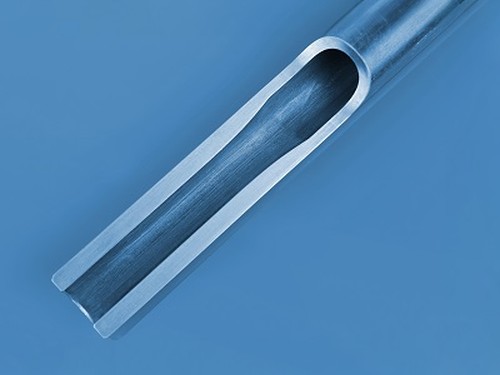
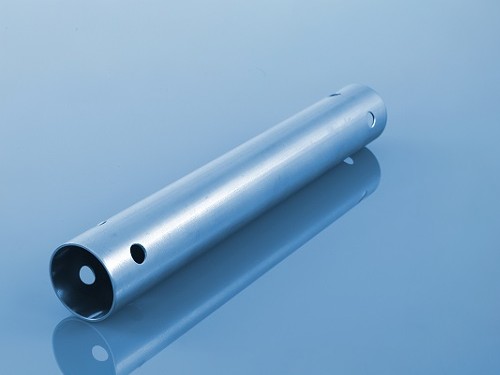
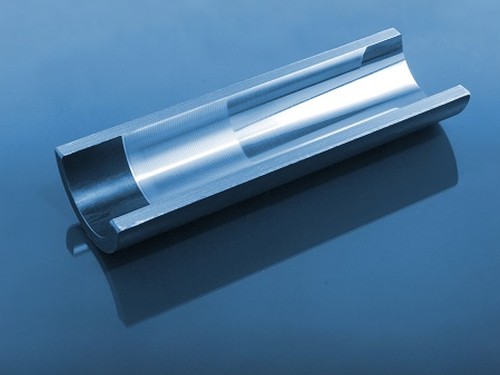
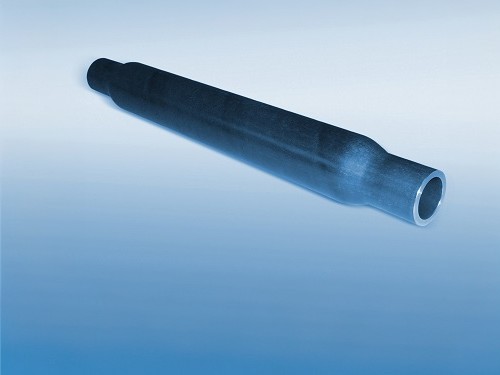

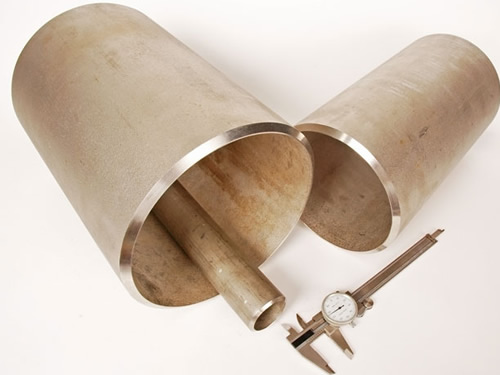
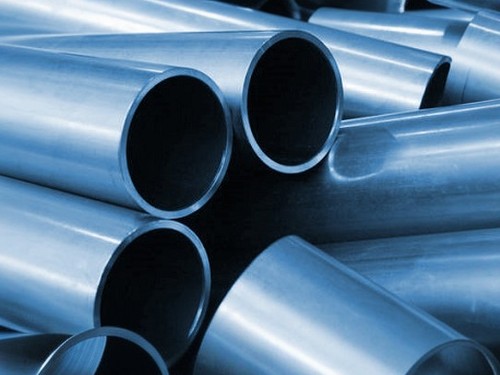
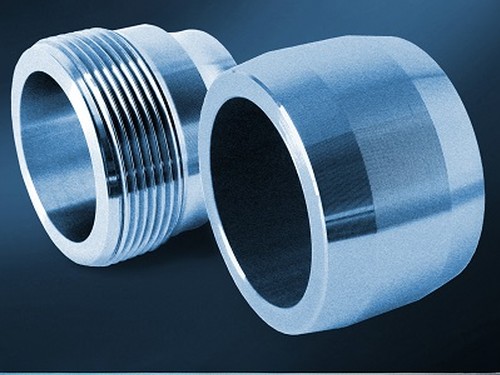
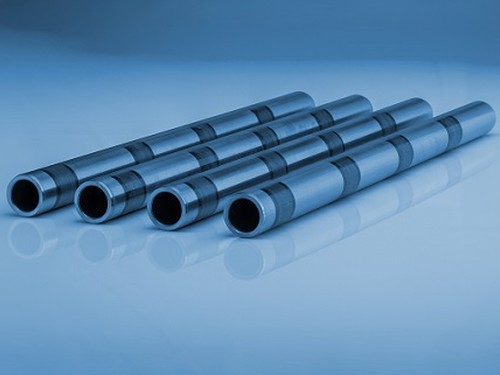
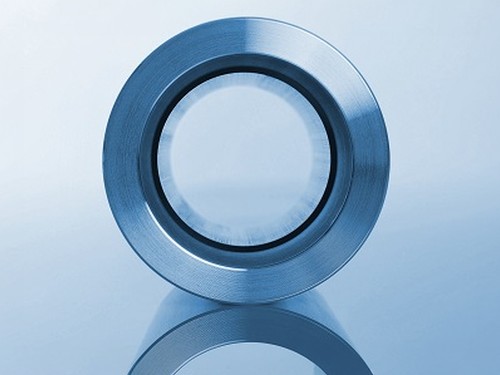
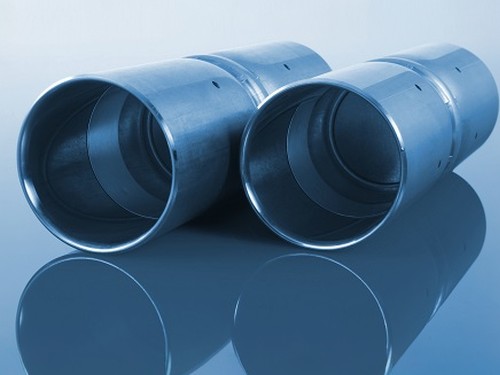


Alloy steel pipes are ideally suitable for chemical, petrochemicals, and other energy-related applications.
The alloy steel pipe adopts high quality carbon steel, alloy structural steel and stainless & heat resisting steel as raw material through hot rolling or cold drawn to be made.
Alloy steel can be used in process area where carbon steel has limitation such as
As an important element of steel products, alloy steel pipe can be divided into seamless steel pipe and welded steel pipe according to the manufacturing technique and tube billet shape.
Here you can see the common alloy steel grade that you will come across.
There are many kinds of materials used for transport in industrial production. Specifically we will have more choices and it is not limited to the use of alloy steel pipe. But even in the face of more choices, many people tend to choose alloy steel pipe. People make their own choices will have their own reasons. This means the alloy steel pipe application has its own advantages. Compared with transmission lines made of other materials, after it meets the basic application requirements, its quantity is lighter. Then in the practical application of alloy steel pipe, it will have more advantages because of this. Besides its physical characteristic advantage, it also has economic advantages. The wide application of alloy steel pipe is with kinds of reasons. So in practical usage, we can exploit the advantages to the full, in this way can we get more profits in these applications of alloy steel pipe.
The transportation of kinds of gases or liquids in production needs to rely on alloy steel pipe. This shows that the actual role of alloy steel pipe application is important. High temperature resistant and low temperature resistant is the tolerance of temperature. In the practical application of alloy steel pipe, there will be many materials need to be transported. However their temperatures are not the same. So this can be the basic requirement to alloy steel pipe. It needs more corrosion resistance. Corrosion resistant material is the best material during transporting, because it is corrosion resistant. So it can be used in more occasions. And it is definitely very convenient for users.
Can be 100% recycled, environmentally friendly, energy-saving, resource conservation, national strategy, national policy to encourage the expansion of the field of application of high-pressure alloy pipe. Of alloy steel pipe total consumption accounted steel in the proportion is only half of the developed countries, to expand the field of use of the alloy steel pipe to provide a wider space for the development of the industry. The future needs of the average annual growth of China’s high-pressure alloy steel pipe long products up to 10-12%.
Alloy Steel pipe contains substantial quantities of elements other than carbon such as nickel, chromium, silicon, manganese, tungsten, molybdenum, vanadium and limited amounts of other commonly accepted elements such as manganese, sulfur, silicon, and phosphorous.
Our team of experienced sales specialists proudly partners with gas and chemical processors, power generation plants, oil refineries, and related industries to offer piping components and value-added services.
The biggest advantages of alloy steel pipe can be 100% recycled, environmentally friendly, energy-saving, resource conservation, national strategy, national policy to encourage the expansion of the field of application of high-pressure alloy pipe. Of alloy tube total consumption accounted steel in the proportion is only half of the developed countries, to expand the field of use of the alloy tube to provide a wider space for the development of the industry. According to the Chinese Special Steel Association alloy pipe Branch Expert Group, the future needs of the average annual growth of China’s high-pressure alloy pipe long products up to 10-12%.
Chemical composition inspection, mechanical properties test(tensile strength,yield strength, elongation, flaring, flattening, bending, hardness, impact test), surface and dimension test,no-destructive test, hydrostatic test.
identification of the chemical composition of the metal used to manufacture the fitting. Uses PMI sensors, including X-ray fluorescence or optical emission spectrometry.
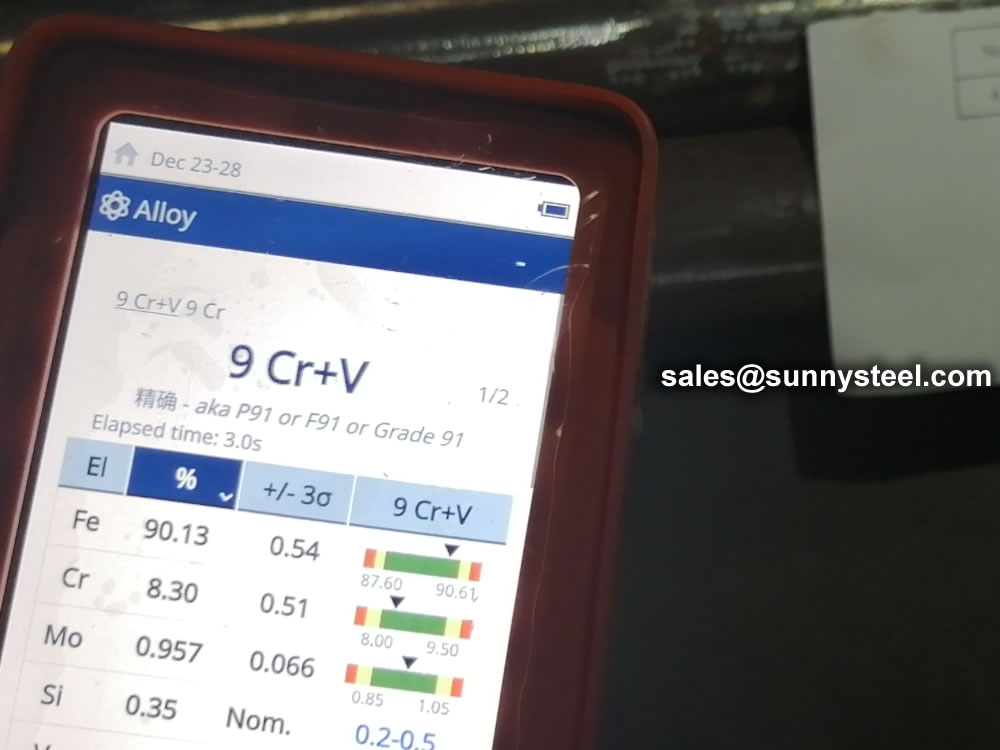
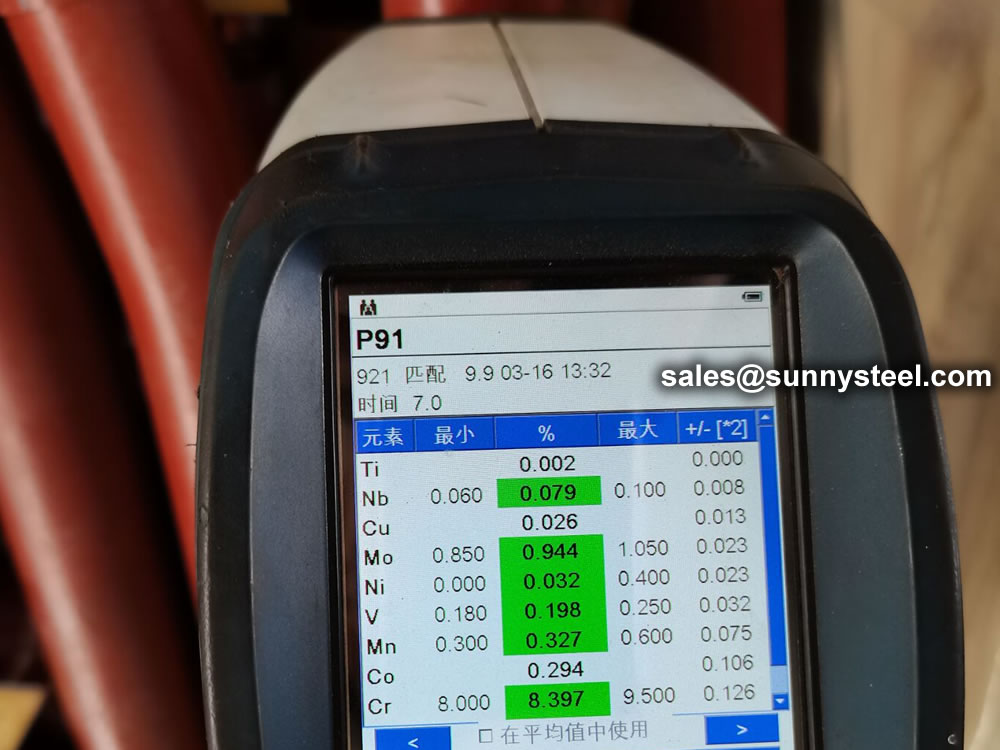
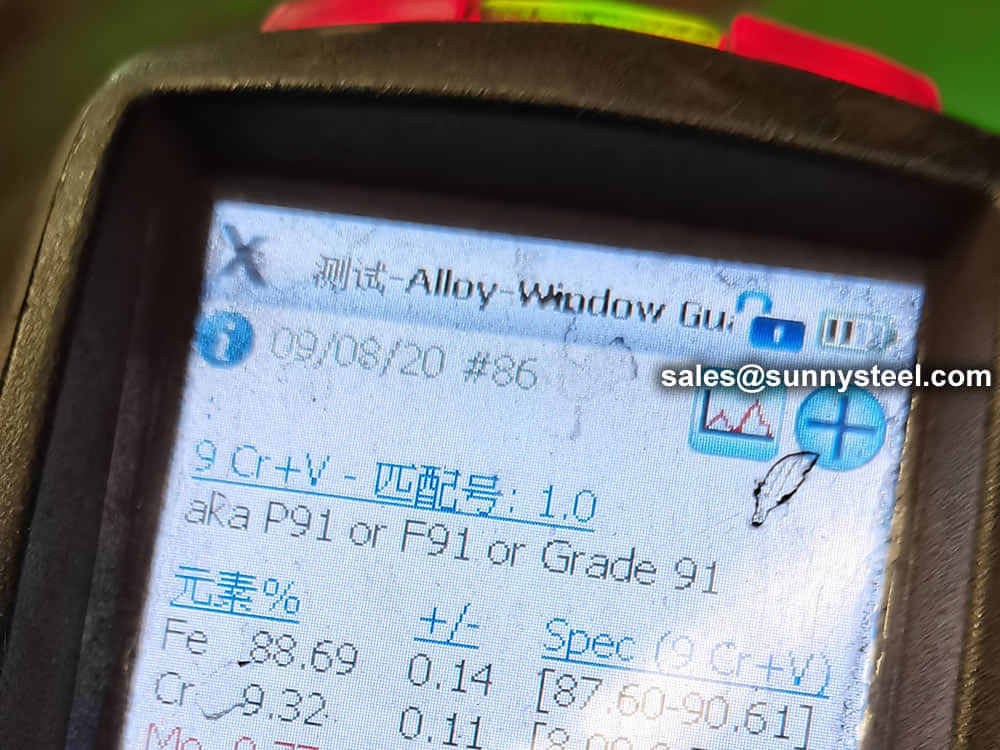
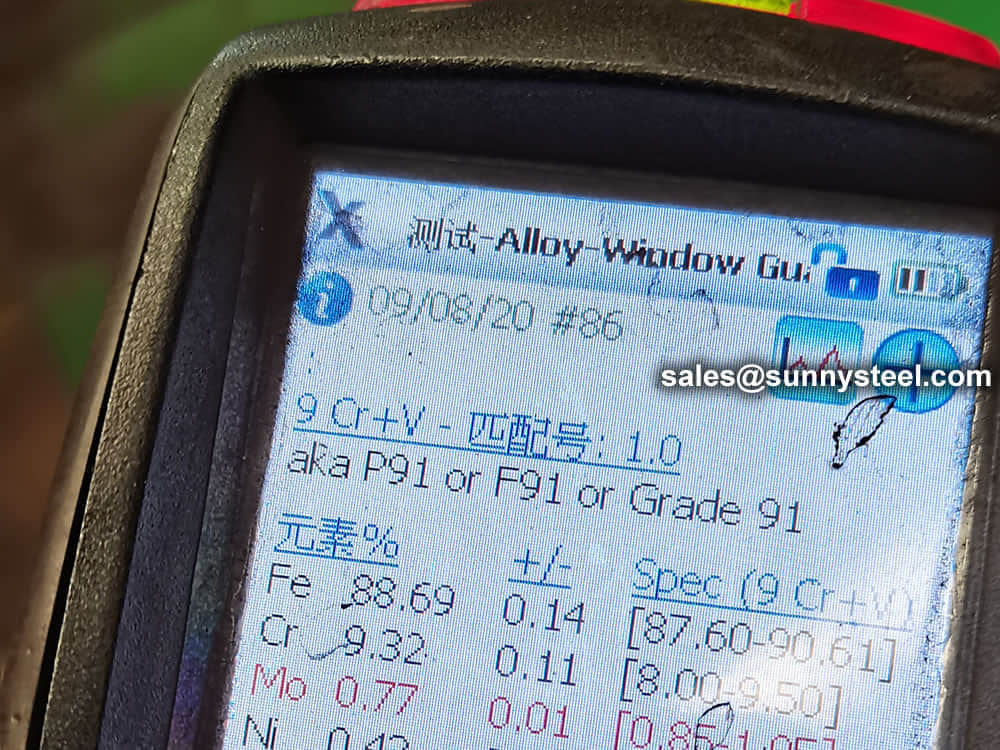
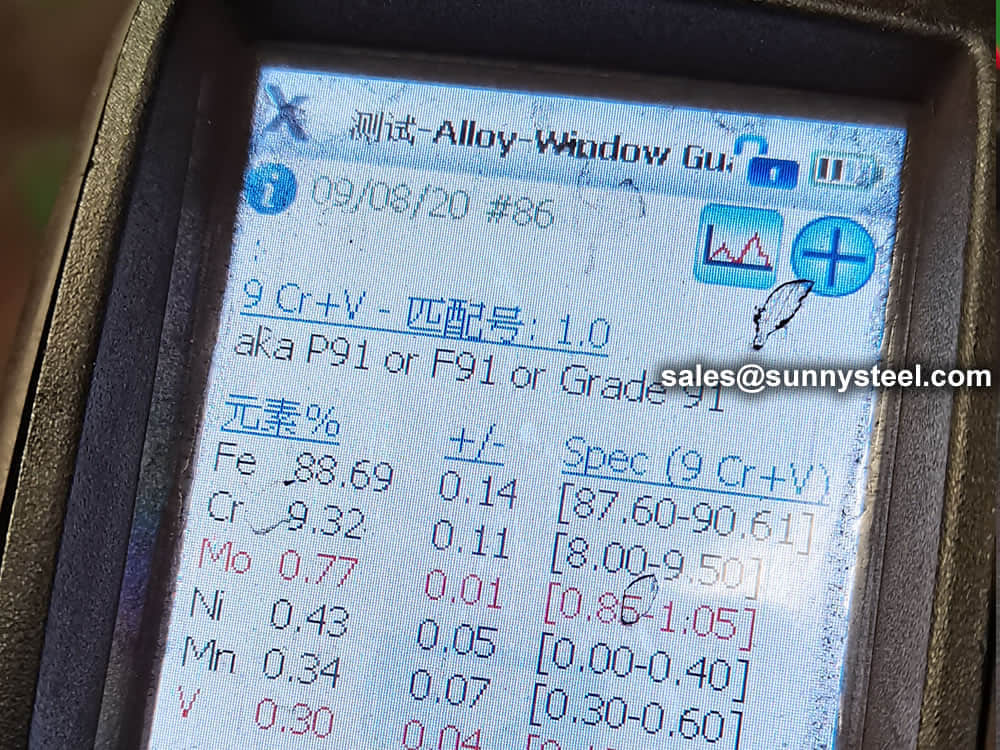

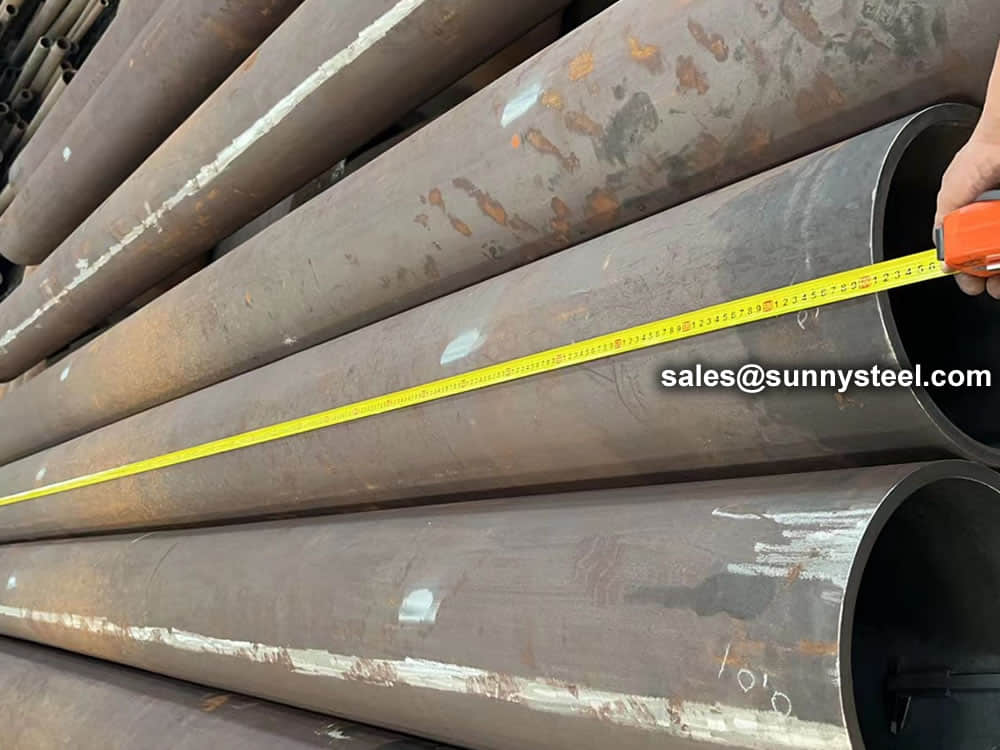
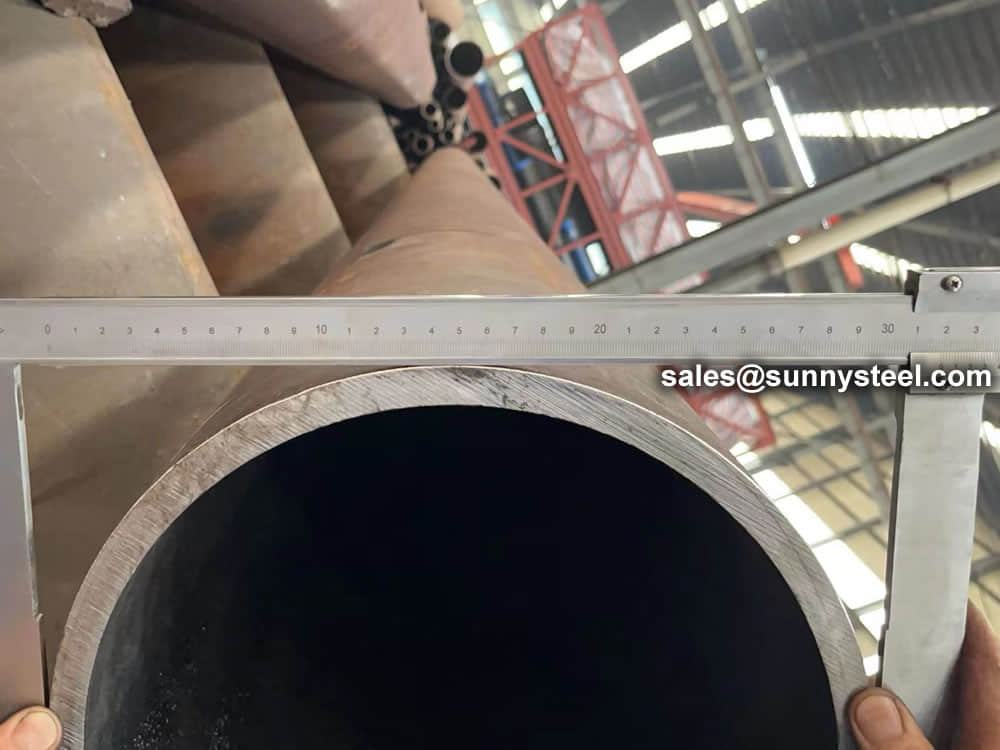
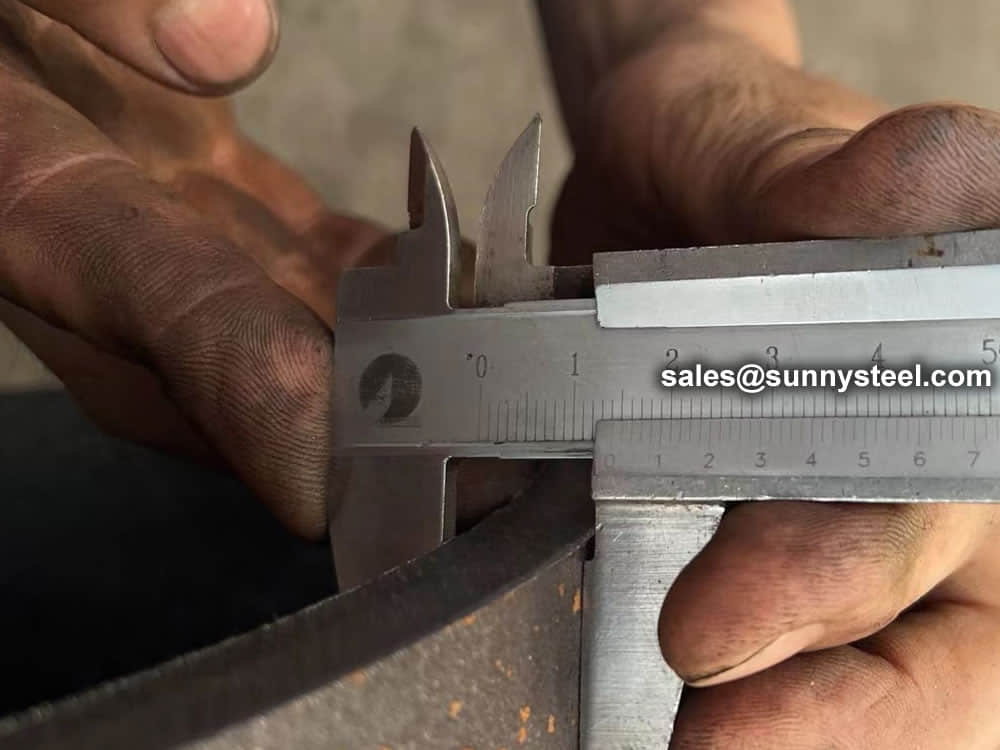
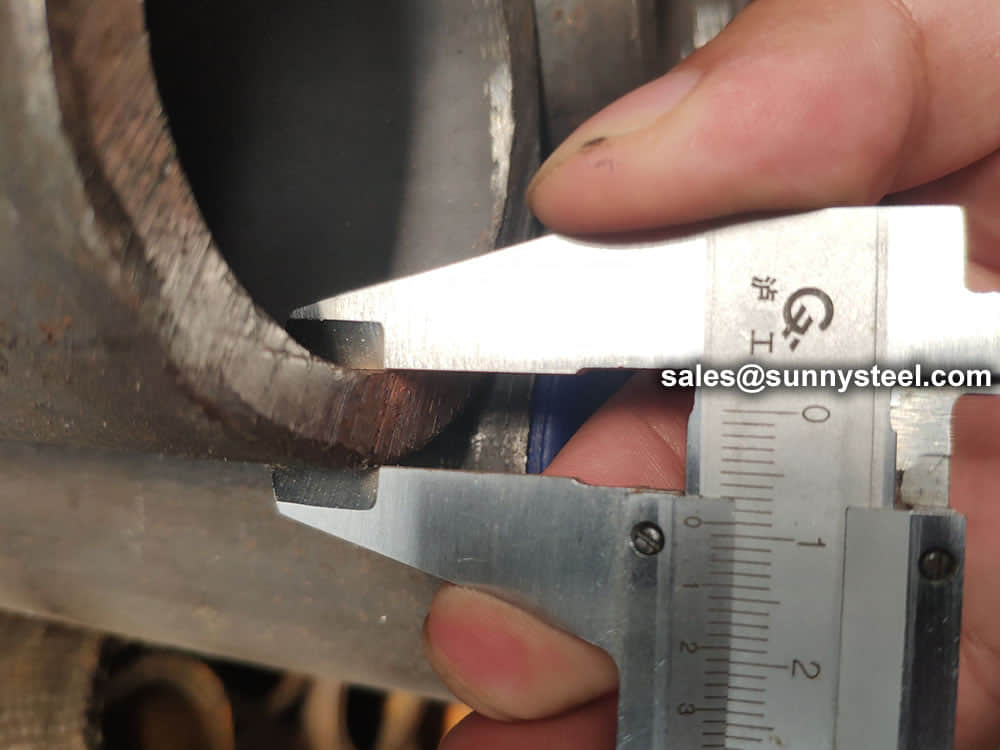
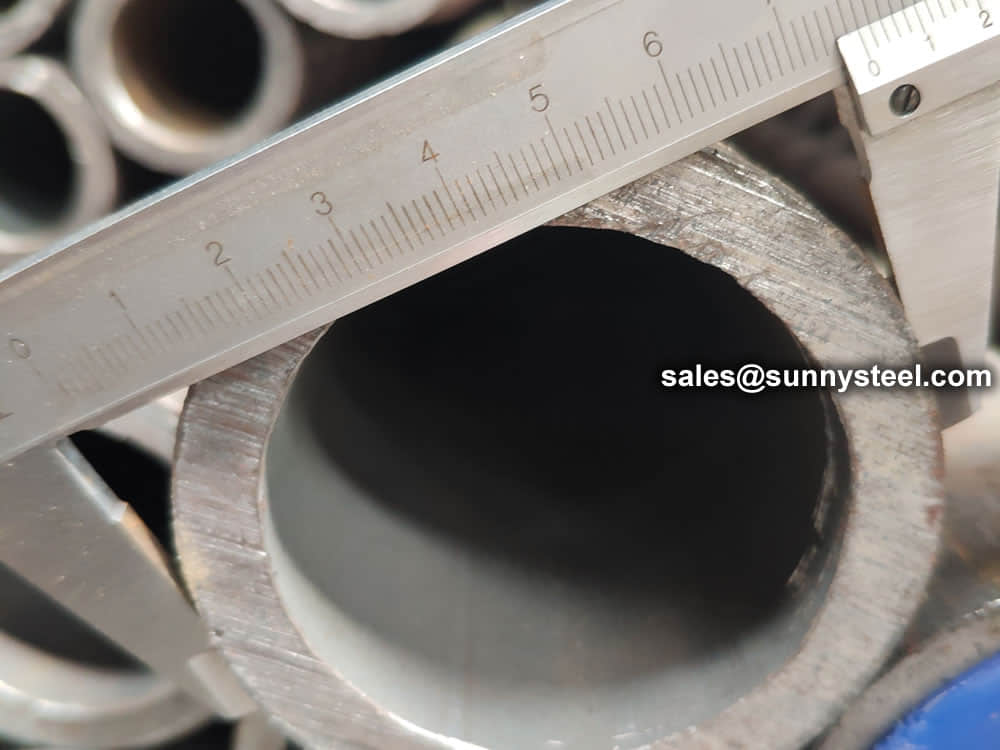
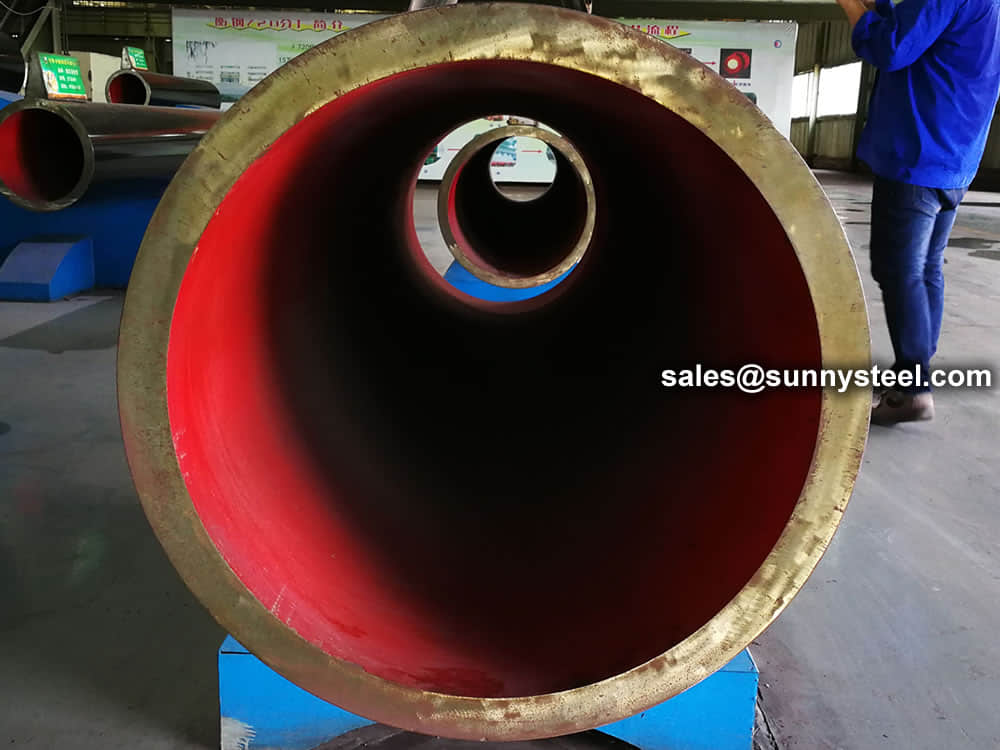
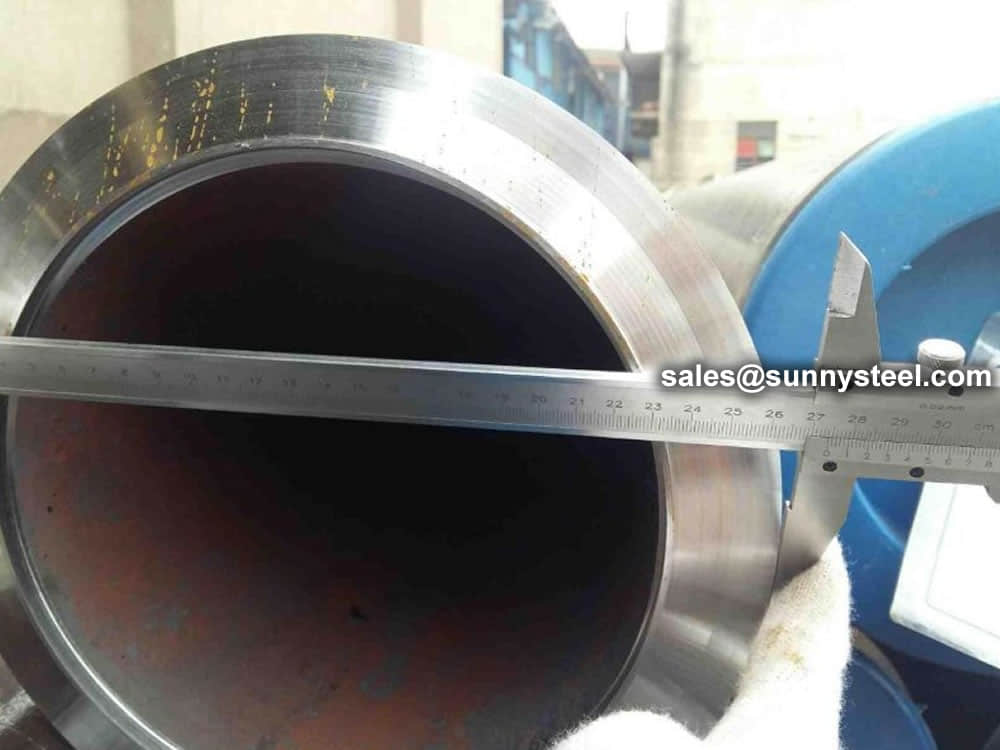
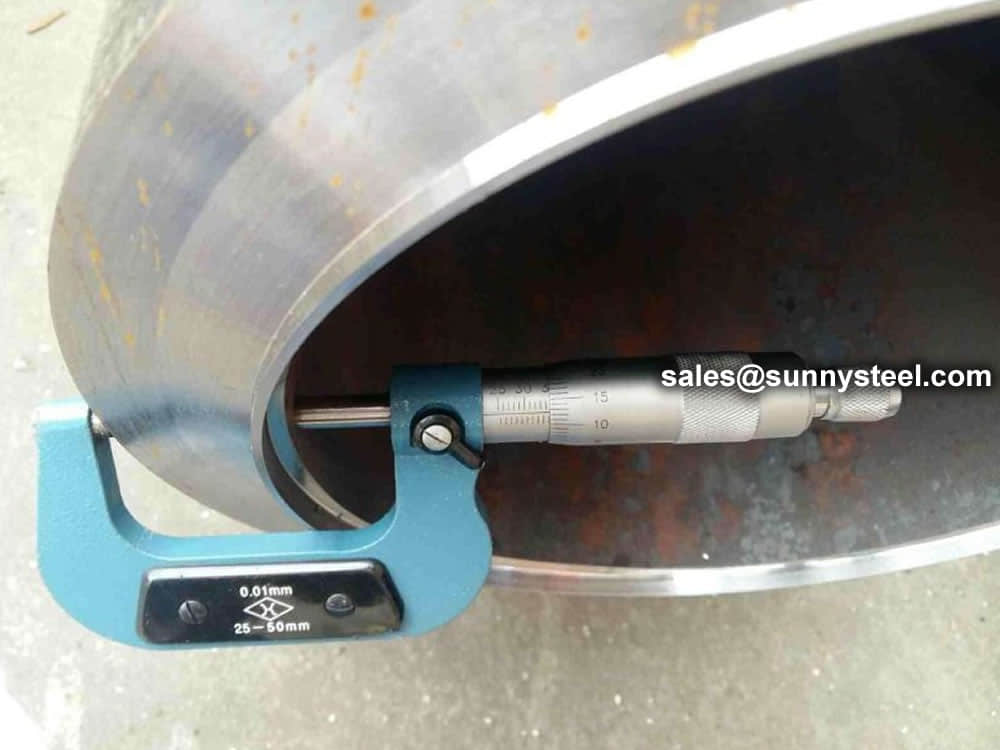
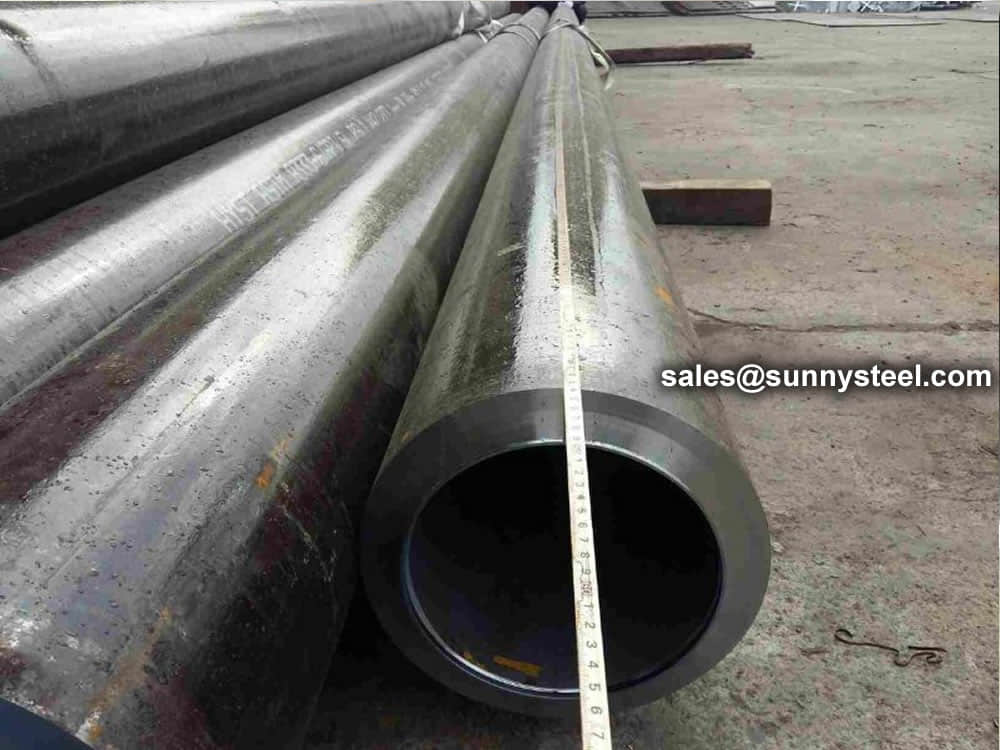
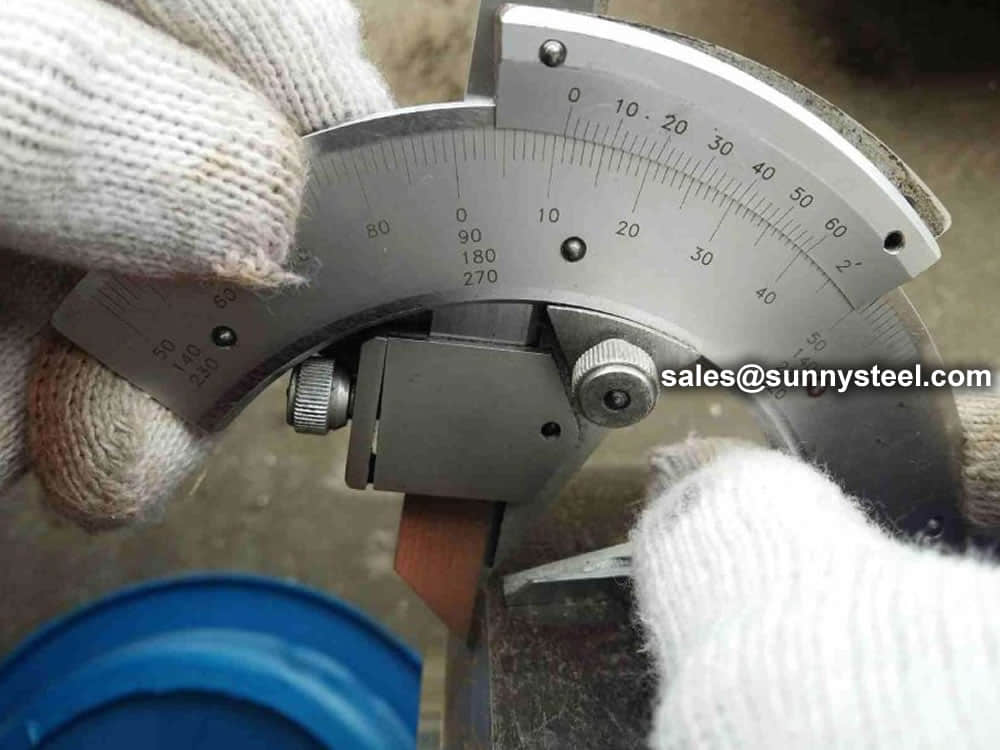
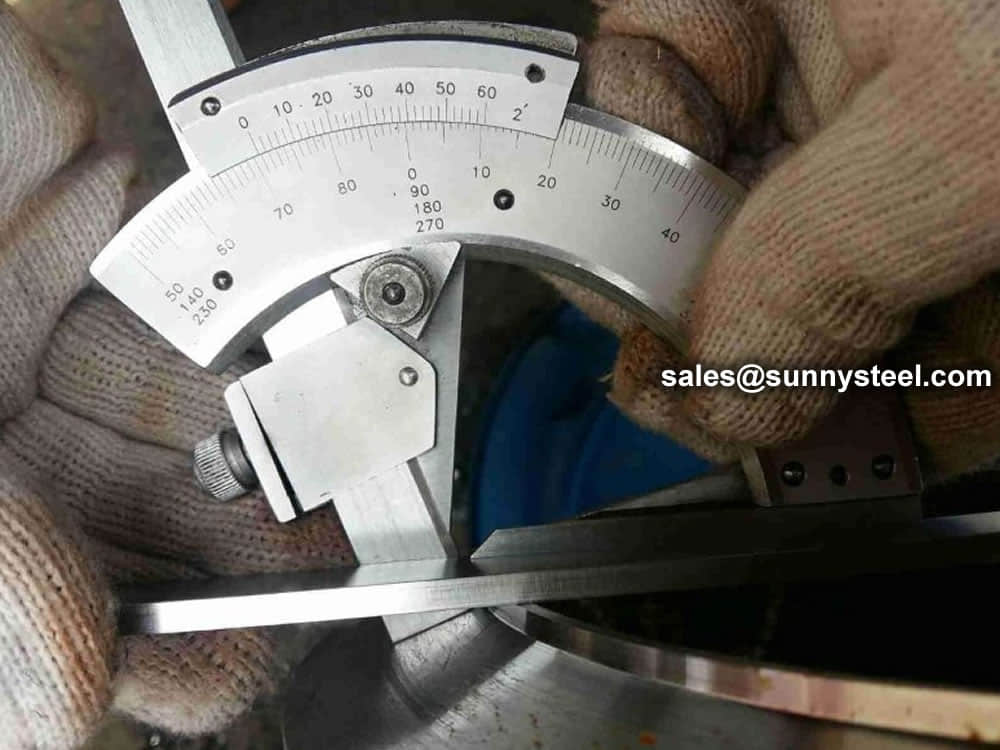
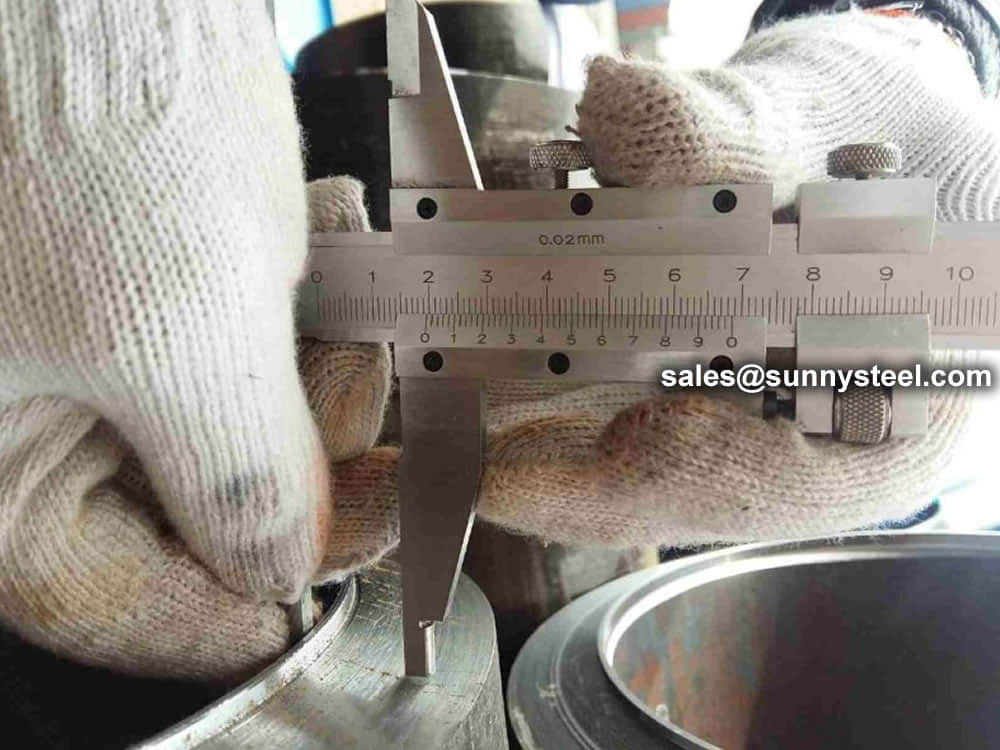
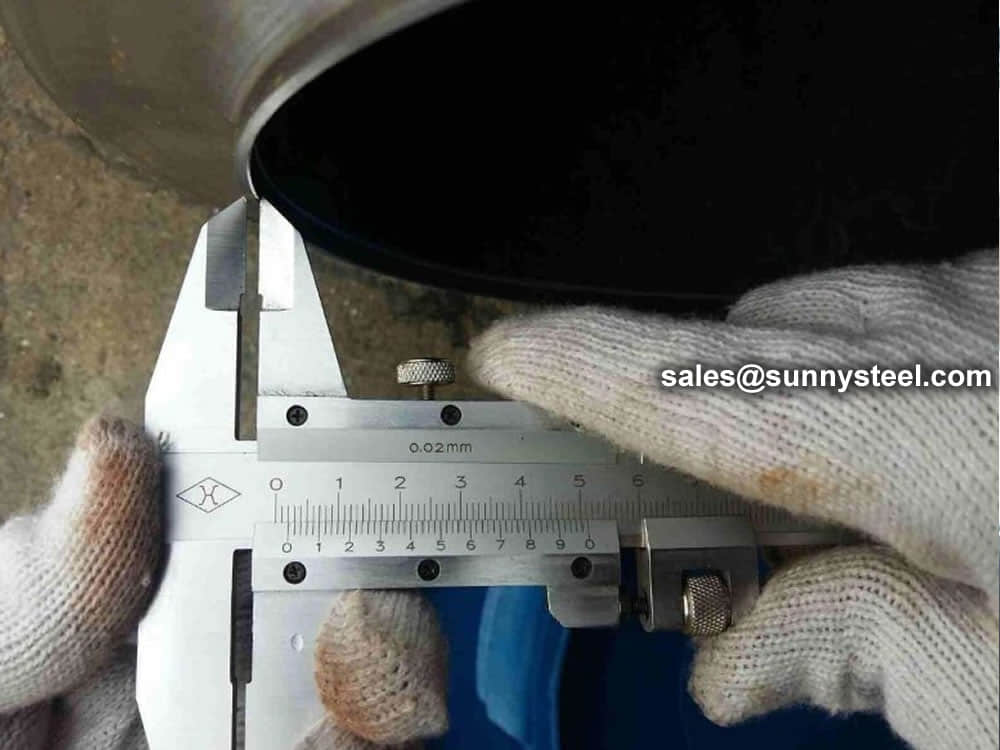
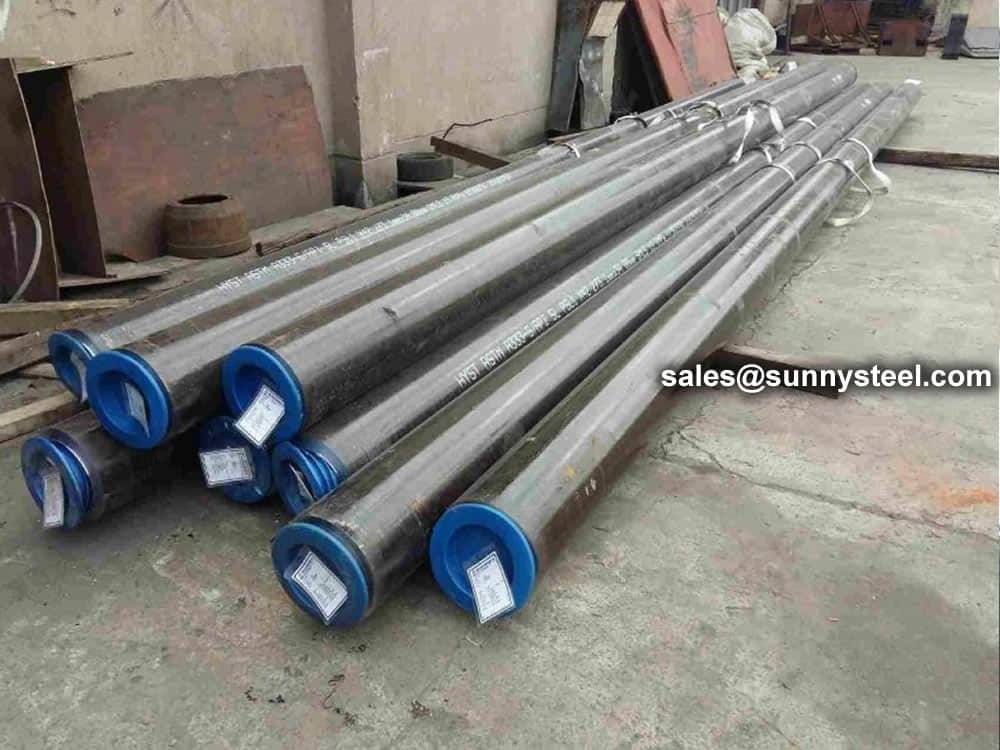
Steel pipe delivery status(condition): cold / hard (BK), cold / soft (BKW), after cold stress relief annealing (BKS), annealing (GBK), normalized (NBK).
| Term | Symbol | Explanation |
|---|---|---|
| Cold-finished/hard (cold-finished as-drawn) | BK | No heat treatment after the last cold-forming process. The tubes therefore have only low deformability. |
| Cold-finished/soft (lightly cold-worked) | BKW | After the last heat treatment there is a light finishing pass (cold drawing) With proper subsequent processing, the tube can be cold-formed (e.g. bent, expanded) within certain limits. |
| Annealed | GBK | After the final cold-forming process the tubes are annealed in a controlled atmosphere or under vacuum. |
| Normalized | NBK | The tubes are annealed above the upper transformation point in a controlled atmosphere or under vacuum. |

The general cold strip mills, volume should go through continuous annealing (CAPL unit) to eliminate cold hardening and rolling stress, or batch annealing reach the mechanical properties of the corresponding standard specifies. Cold rolled steel surface quality, appearance, dimensional accuracy better than hot-rolled plate, and right-rolled thin product thickness is about 0.18mm, so the majority of users favor.
Cold rolled steel coil substrate products deep processing of high value-added products. Such as electro-galvanized, hot dip galvanized, electro-galvanized fingerprint resistant, painted steel roll damping composite steel, PVC laminating steel plates, etc., so that the excellent quality of these products has a beautiful, high resistance to corrosion, has been widely used.
Cold rolled steel coil finishing after annealing, cut the head, tail, trimming, flattening, smooth, heavy volume, or longitudinal clipboard. Cold-rolled products are widely used in automobile manufacturing, household electrical appliances, instruments, switches, buildings, office furniture and other industries. Steel plate strapping package weight of 3 to 5 tons. Flat sub-volume typically 3 to 10 tons / volume. Coil diameter 6m.
Bare packing/bundle packing/crate packing/wooden protection at the both sides of tubes and suitably protected for sea-worthly delivery or as requested.
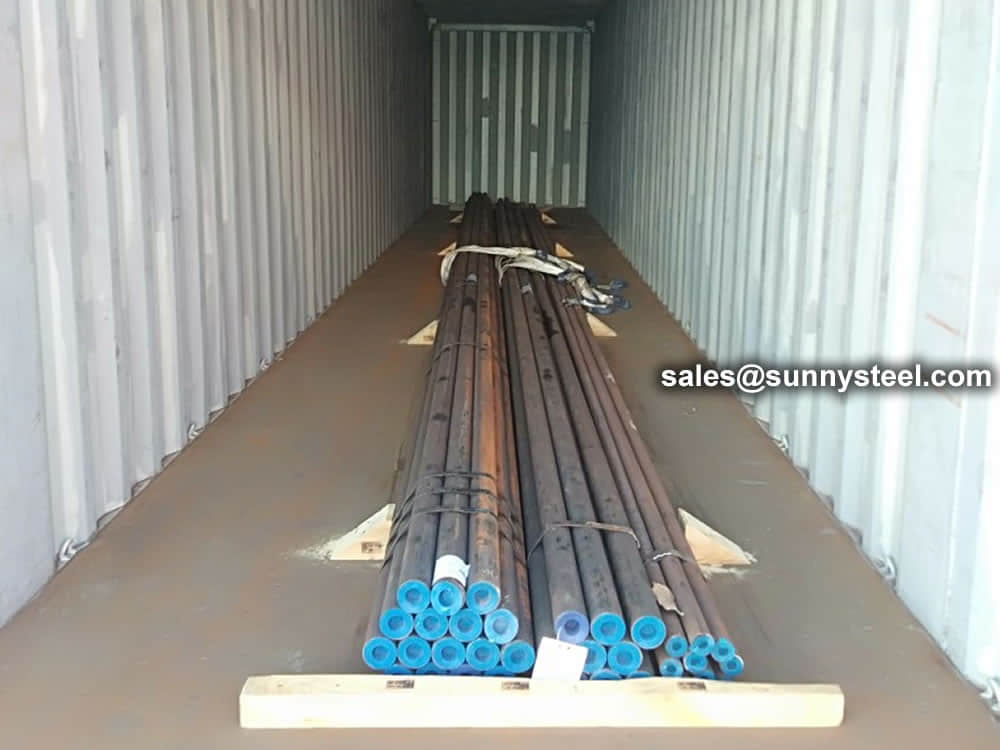
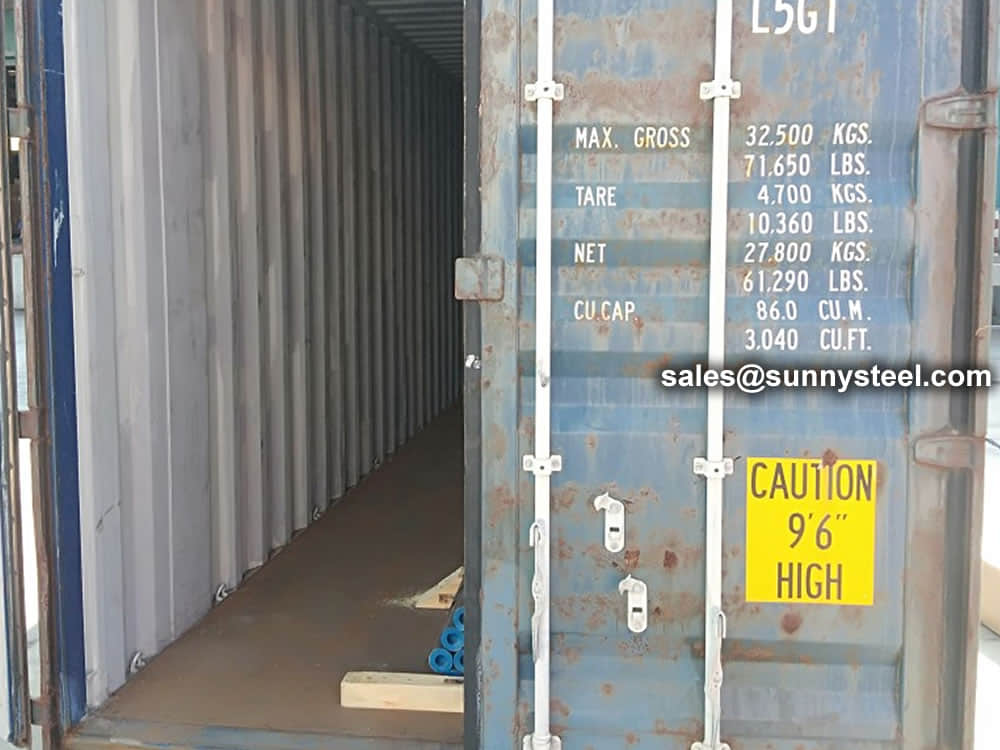
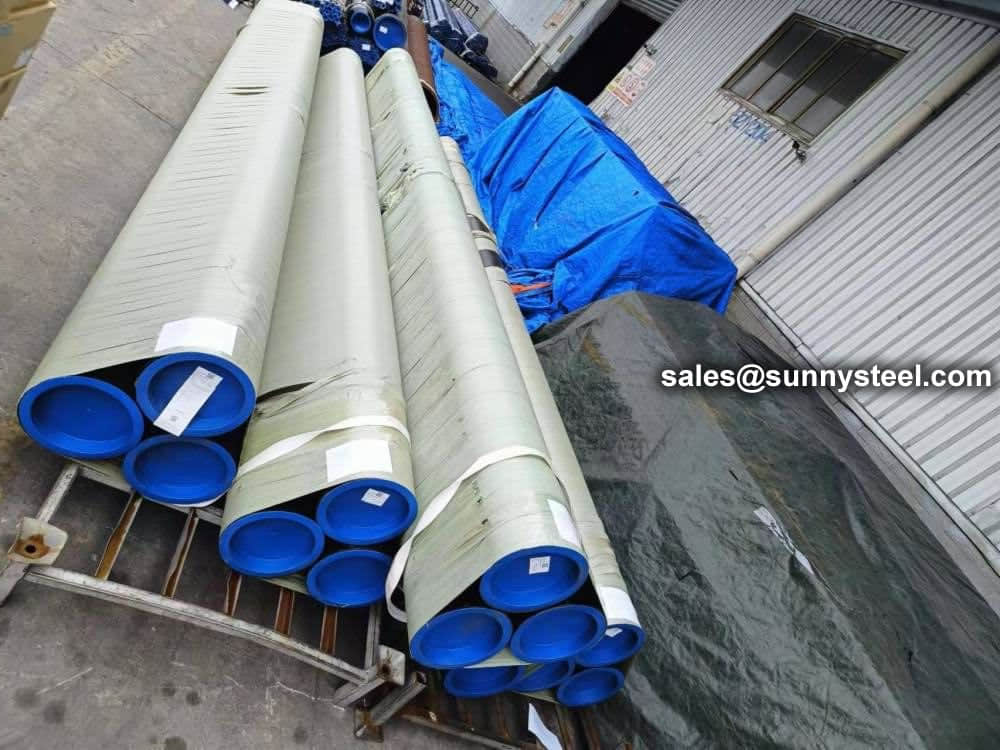









There are probably hundreds of different methods for packing a pipe, and most of them have merit, but there are two principles that are vital for any method to work prevent rusting and Sea transportation security.
Our packing can meet any needs of the customers.
Our team of experienced sales specialists proudly partners with gas and chemical processors, power generation plants, oil refineries, and related industries to offer piping components and value-added services.
Alloy steels are made by combining carbon steel with one or several alloying elements, such as manganese, silicon, nickel, titanium, copper, chromium and aluminum. These metals are added to produce specific properties that are not found in regular carbon steel. The elements are added in varying proportions (or combinations) making the material take on different aspects such as increased hardness, increased corrosion resistance, increased strength, improved formability (ductility); the weldability can also change.
Commonly used alloying elements and their effects are listed in the table given below.
| Alloying Elements | Effect on the Properties |
|---|---|
| Chromium | Increases Resistance to corrosion and oxidation. Increases hardenability and wear resistance. Increases high temperature strength. |
| Nickel | Increases hardenability. Improves toughness. Increases impact strength at low temperatures. |
| Molybdenum | Increases hardenability, high temperature hardness, and wear resistance. Enhances the effects of other alloying elements. Eliminate temper brittleness in steels. Increases high temperature strength. |
| Manganese | Increases hardenability. Combines with sulfur to reduce its adverse effects. |
| Vanadium | Increases hardenability, high temperature hardness, and wear resistance. Improves fatigue resistance. |
| Titanium | Strongest carbide former. Added to stainless steel to prevent precipitation of chromium carbide. |
| Silicon | Removes oxygen in steel making. Improves toughness. Increases hardness ability |
| Boron | Increases hardenability. Produces fine grain size. |
| Aluminum | Forms nitride in nitriding steels. Produces fine grain size in casting. Removes oxygen in steel melting. |
| Cobalt | Increases heat and wear resistance. |
| Tungsten | Increases hardness at elevated temperatures. Refines grain size. |

When you partner with Sunny Steel, you can stop worrying about meeting deadlines thanks to our responsive and timely service. You'll also say goodbye to unnecessary shopping around. Instead, you'll get white glove service from an expert who understands your needs and can get you the materials you need quickly.
